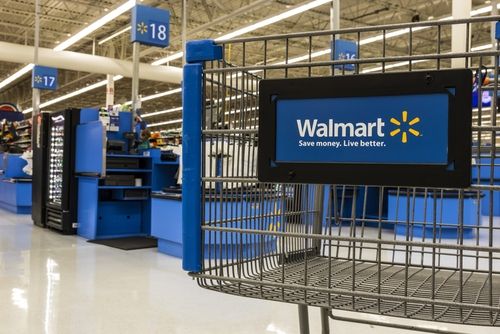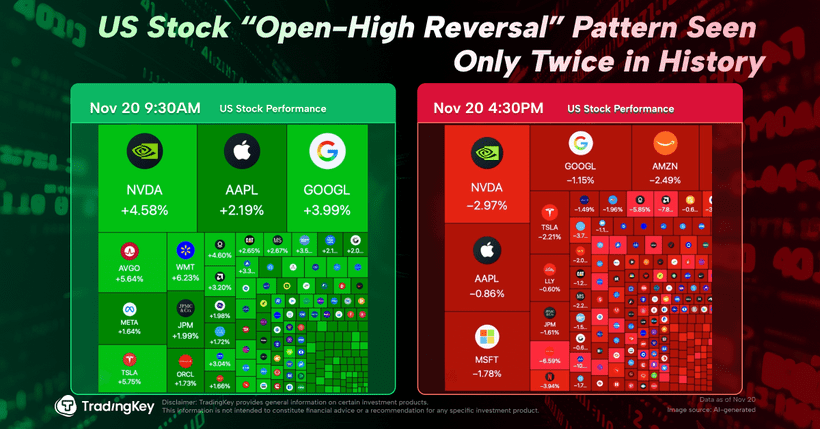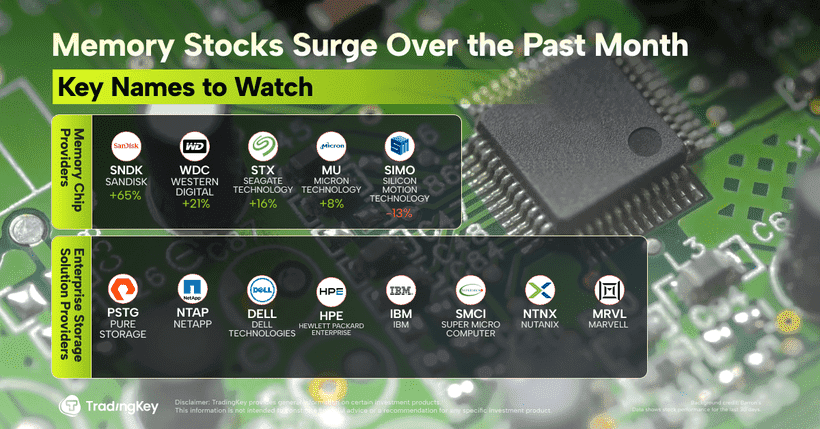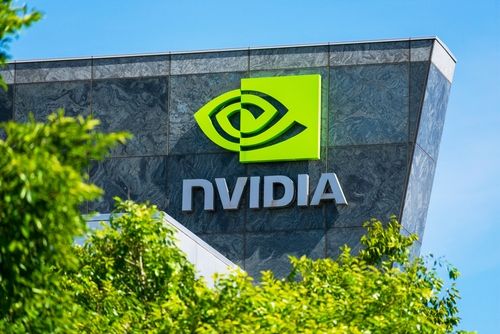Circle Q2 Earnings Insight: Is Its Long-Term Growth Path Clear?

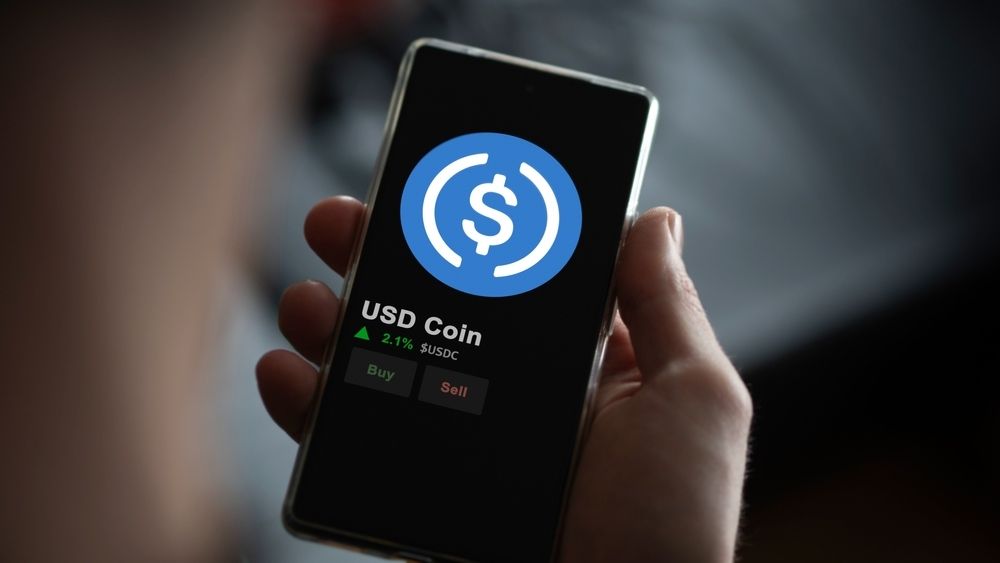
TradingKey - Circle’s Q2 2025 earnings beat expectations and sent the stock up 7%, briefly touching $159 post−release. Revenue came in at 658 million, a 53% increase year-over-year — certainly a number that's hard to ignore. But despite the strong headline figures, the story isn’t as straightforward as it looks. There’s still a wide gap between Circle’s long-term ambitions and where it stands today.
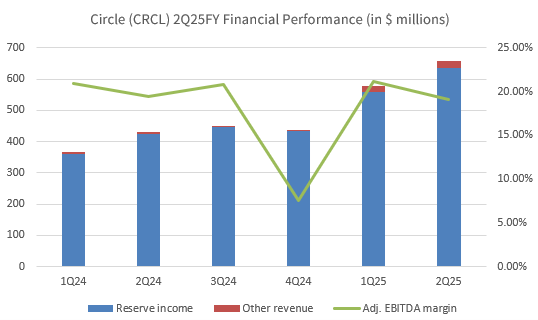
By the end of Q2, USDC’s circulation had reached 61.3 billion. That figure rose to 65.2 billion by August 10— a 6% quarter-over-quarter increase. Not bad… but to hit management’s ambitious 40% annual growth target for USDC, Circle would need to nearly double that growth rate to 11.6% per quarter in the second half of the year.
Circle’s IPO in June 2025 was widely viewed as a landmark moment for the stablecoin industry, and USDC’s 6% growth in this context isn’t incredible. But unless Circle can demonstrate faster adoption — especially in payments — there’s a risk those expectations won’t materialize fast enough.
Circle is thinking bigger. In 2024, it launched EURC — a fully-regulated euro-backed stablecoin out of France. It’s now the largest euro-denominated stablecoin in terms of circulation, with a market cap of $225 million — nearly triple what it was a year ago. So international expansion is clearly part of the plan.

CoinMarketCap, EURC market cap, data as of August 20, 2025.
The current market environment still lacks broad, real-world adoption of stablecoins — so a short-term slowdown in growth may not be the real issue here. What matters more is whether Circle can successfully break into cross-border and institutional payment use cases to expand its market share. That’s the kind of traction that could unlock stronger, more sustainable long-term growth.
Building the Payments Engine
To help solve that, look at Circle’s recent moves in the global payments space.
Back in May, Circle launched the Circle Payments Network (CPN), a stablecoin-based platform for cross-border transactions. So far, it’s live in four markets — Hong Kong, Brazil, Mexico, and Nigeria — and has four active partners: RedotPay, Conduit, Tazapay, and Alfred. Over 100 more partners are in the pipeline. Circle expects the network to pick up real momentum in the second half of 2025.
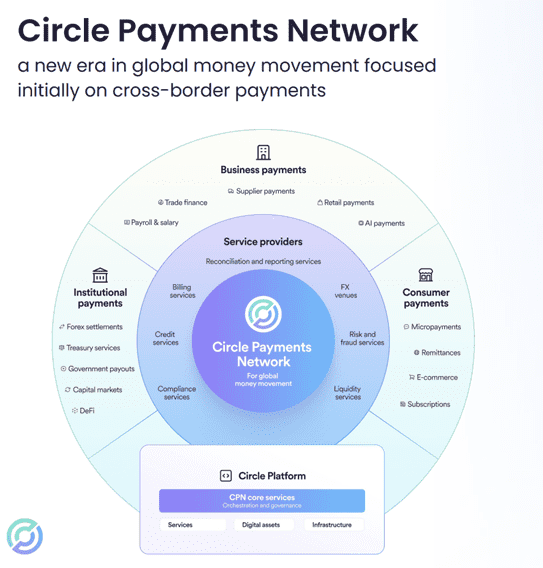
CPN isn’t just about adoption — it’s starting to generate revenue, too. That includes transaction fees, network access charges, and FX spreads. A positive sign that Circle’s infrastructure bets are starting to pay off.
Circle also introduced a new blockchain called Arc — a custom-built Layer-1 chain aimed at payments, FX, and capital markets. Arc is fast (sub-second settlement), secure, and designed to meet key financial regulations, including Basel standards. USDC will be the native gas token, meaning users will pay network fees in USDC — another non-interest-based source of income that could become meaningful over time.
Other Revenue is Small — But Has High Potential
Circle’s “other revenue” — which includes things like blockchain rewards, cross-chain transfers, redemption fees, and yield product revenue (like from USYC) — came in at 24 million for the quarter, comfortably beating estimates of 17 million.
Management raised its full-year guidance for this category to 75–85 million, up from70 million. Though small today, this revenue type has high margins and supports infrastructure growth. Over time, it could be a key component of Circle’s transition from relying heavily on interest income to generating platform-based revenue.
They're playing the long game, and this is foundational stuff.
Circle: Short-Term Volatility is Secondary, Long-Term Growth Path Remains the Focus
Margins Feeling the Pinch
TradingKey - Then there’s profitability. Circle’s management is guiding for an RLDC (Reduced-Level Direct Contribution) margin of 37%. That’s a drop from 40% in Q1 and 42% a year ago.
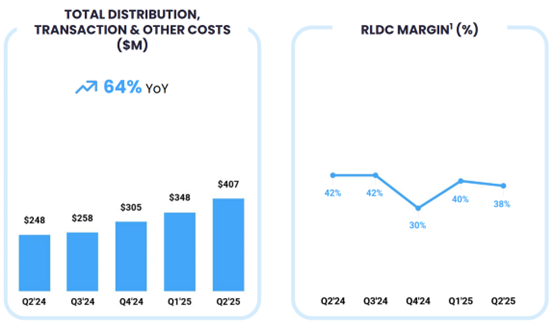
Source: Company Earnings
A big reason is Coinbase. Thanks to an agreement that runs through 2027, Coinbase earns a slice of the interest income from USDC balances held on its platform. As a larger share of Circle’s reserves shift to Coinbase, Circle’s margins feel the squeeze.
The company is actively trying to diversify its distribution channels — it’s now on Ethereum, Solana, Polygon, Avalanche, Algorand, and more. It’s also building out Circle Mint, a wholesale and enterprise platform. But those efforts are still in the ramp-up phase and haven’t yet moved the needle meaningfully.
Still, Circle’s USDC market share has grown from a mere 2% in Q2 2024 to 10% in Q2 2025. That’s progress — but it’s far from a dominant position.
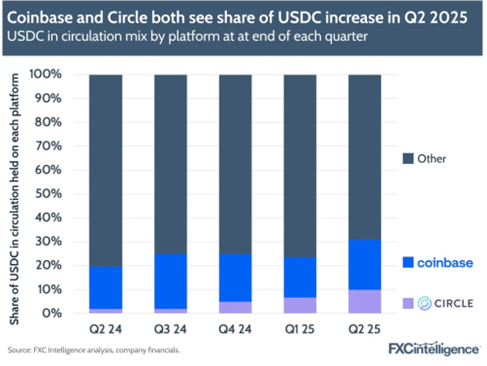
Source: FXCintelligence
Competitive Landscape: Can Circle Keep Up?
Let’s not forget the competition.
Tether (USDT) is still in the room. It's massive, deeply liquid, and widely adopted — even though it’s far less regulated. But that might be about to change. Tether is making moves to re-enter the U.S. market under new regulatory frameworks, with plans to launch a fully compliant stablecoin by the end of 2025. That’s a big threat to Circle’s “compliance-first” advantage.
What if tether becomes compliant? This might be a game-changer.
Tether runs a lightweight, cost-efficient distribution model — relying on Tron, Ethereum, market makers, and chain-level subsidies to keep fees low and liquidity high. If Tether nails compliance and starts distributing directly to financial institutions, its profit margins could widen even further.
Compare that to Circle, which by choosing a high-compliance route, faces heavier operational overhead and longer payback cycles. It may win credibility, but it loses speed and flexibility.
If Tether goes mainstream with full compliance, it could combine its scale with efficiency — a powerful combo that could make life difficult for Circle.
And there’s more: traditional financial institutions are starting to roll out their own stablecoin products, too. So while Circle built an early reputation for regulatory alignment, that’s no longer a moat — it’s just the starting line.
Valuation
Here’s the thing: shortly after the Q2 earnings call, Circle announced a secondary offering of 10 million shares — and 80% of that is being sold by existing shareholders. That’s a red flag for some investors. It raises questions: is this just raising capital, or are insiders cashing out near what they see as a peak?
Realistically, Circle will probably need to revise its lofty 40% USDC growth target. A 30%-plus growth rate for the full year seems far more achievable. Management now forecasts 2.6 billion in revenue for 2025, with 125 million coming from other (non-interest) income categories.
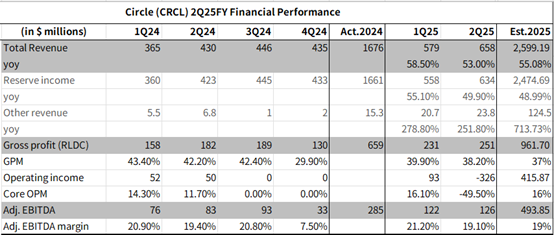
Source: TradingKey, Company Earnings
With RLDC margins guided at 37%, that gives us close to $494 million in adjusted EBITDA. Circle’s business model has strong cash flow conversion — likely over 80% of earnings drop to free cash flow due to the nature of reserve-backed stablecoins.
All said and done, valuation probably sits closer to the $70–80 range — a notable discount from its current trading level, implying potential downside.
Risks
Let’s be clear: Circle faces real risks.
Much of its revenue still comes from interest on reserve assets. With around 60billion in circulation, a 100bps drop in interest rates could slice off 600 million in annual revenue.
And that’s just one issue. Circle doesn’t currently offer yield to USDC holders, unlike competitors like PayPal, which gives PYUSD users a 3.7% annual return. As more platforms introduce rewards, Circle may face challenges keeping users loyal unless it adapts.
The macro picture matters too. Interest rates are expected to trend down — and so will the interest income Circle relies on. Meanwhile, compliance is no longer a unique selling point. Tether is catching up and the window for Circle to solidify its lead is closing.
Bottom Line: Long-Term Potential, Short-Term Uncertainty
There’s no doubt that the stablecoin space has huge potential, especially as regulation becomes clearer globally.
Circle has some strong long-term value propositions: expanding use cases in cross-border payments, building enterprise infrastructure, and developing new revenue streams beyond interest. But it’s got a lot of work to do before those elements translate into dependable profits.
Right now, Circle is in a critical transition phase — trying to go from a USDC issuer to a full-stack stablecoin infrastructure provider. If it nails that shift, the upside could be significant, and current valuations may one day look cheap.
But in the short-term, there’s high uncertainty, plenty of execution risk, and weak support for its current price level.
For investors, this might be the kind of stock you want to "buy and hold" with a long-term lens — but don’t be surprised if things stay bumpy for a while.
Circle’s Q2 Earnings Are Coming—Here’s What Investors Should Be Watching
TradingKey - Since its IPO in June, Circle has been in the spotlight. As the second-quarter earnings release (scheduled for August 12) approaches, investors are wondering: Can Circle keep up the momentum it showed in Q1?
Circle’s Business: Making Money Off the “Interest Spread”
At its core, Circle has a pretty straightforward model. When users want to get USDC — the stablecoin tied 1:1 to the U.S. dollar — they send dollars to Circle. That’s called “minting” USDC.
What does Circle do with the cash? It deposits the dollars into custodial reserve accounts, mostly invested in short-term U.S. Treasuries and other low-risk assets. The interest earned on these reserves is Circle’s main source of revenue.
When users want their dollars back, they “redeem” USDC. The token is burned, and the fiat goes back into their bank account. Circle keeps the interest in the middle — it’s essentially earning a spread by holding assets that yield more than the cost of managing the system.
Strong Growth, But Costs Are Catching Up
Circle’s Q1 FY2025 numbers were solid: reserve income jumped 55% YoY. That kind of growth was driven by rising demand for USDC and high interest rates on reserves.
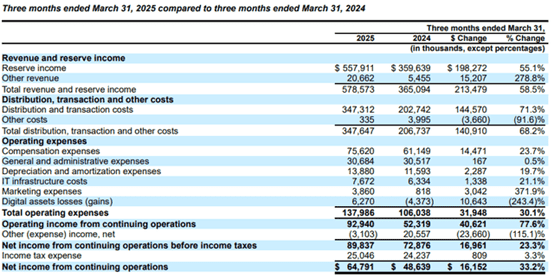
But growth came at a cost. Literally. Total expenses grew by 73% YoY — that’s faster than revenue, and it squeezed margins.
Much of that increase had to do with distribution costs, especially fees paid to Coinbase, Circle’s biggest distribution partner. More on that in a minute.
Meanwhile, regulatory clarity has been boosting institutional confidence in USDC. That trend is expected to support continued adoption. Analysts are calling for Q2 revenue to grow around 55% YoY, though sequential (QoQ) growth will probably be more moderate — around 10–15%. Bloomberg’s consensus has Q2 revenue pinned at about $646 million.
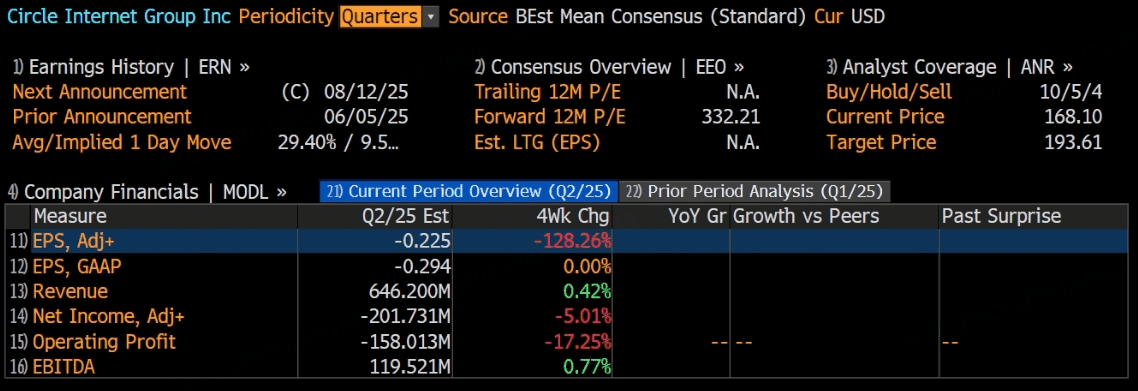
Circle isn’t standing still. In 2024, it launched EURC, a euro-backed stablecoin. It’s still early, but the feedback has been positive. Over time, EURC might help Circle expand its footprint into new markets.
Bigger picture, the company is building out a global blockchain-based payments infrastructure: the Circle Payments Network (CPN). The idea is to enable near-instant, low-cost, cross-border payments using stablecoins like USDC and EURC.
Right now, CPN isn’t a revenue machine — but investors see it as a strategic bet that could reduce Circle’s reliance on intermediaries, lower operating costs, and potentially unlock a new revenue stream as it scales.
Trying to Break Free from Coinbase: Enter Binance and Others
Despite strong revenue growth, Circle has yet to turn those dollars into steady profits.
What’s dragging it down? Distribution fees — particularly those paid to Coinbase under their revenue-sharing agreement.
Here’s the issue: Coinbase gets 100% of the interest income earned on USDC held on its platform and a 50% cut from reserves held elsewhere. With about 20% of all USDC sitting on Coinbase, that's a pretty sweet deal — for Coinbase.
In fact, according to JPMorgan, Coinbase made about 300 million from USDC in Q1 —more than Circle’s net income of 230 million. That’s a tough pill to swallow and underscores Circle’s current channel-dependency problem.
Circle knows it can’t rely too heavily on one partner. In 2024, it struck a deal with Binance — paying a 60million one−time fee plus monthly SOFR−based payments—to secure 1.5 billion of USDC liquidity support.
It’s also integrating with wallets, blockchain networks, and other platforms to create more diverse on-ramps. That said, Coinbase still dominates — newer partners haven’t yet contributed enough to change the picture meaningfully.
Looking ahead, distribution costs are still expected to trend higher in Q2, but not as sharply as in Q1. Circle’s actively trying to balance growth with smarter spending. Success in scaling CPN could eventually help ease the pressure on margins and change how Circle reaches users altogether.
Profitability Outlook: Still in Limbo
As of now, Circle’s bottom line remains fragile. In Q1, gross profit clocked in at 230 million—but net EPS came in right at 0.00 due to high costs.
Analyst expectations for Q2 are all over the map. Some forecasts suggest losses in the range of 0.08–0.08–1.29 per share; others think Circle might squeeze out a small profit — up to $0.20 per share. Regardless, stable and meaningful profitability likely won’t happen until Circle finds a way to materially bring distribution costs down or generate scalable revenue from new initiatives like CPN.
Pre-Profit and Still a Buy? Let’s Talk Valuation
Let’s now turn to the investment perspective. Circle (CRCL) currently trades at a forward P/E of 117 — high on paper, but not unusual for a young, fast-growing company. Early-stage firms often lack near-term profits, but valuations reflect strong expectations for future growth.
According to Seeking Alpha, Circle’s EPS is projected to grow 38% in 2026, and nearly 150% in 2027. If achieved, its forward P/E could drop to around 35 by 2027 — a much more reasonable level relative to earnings.
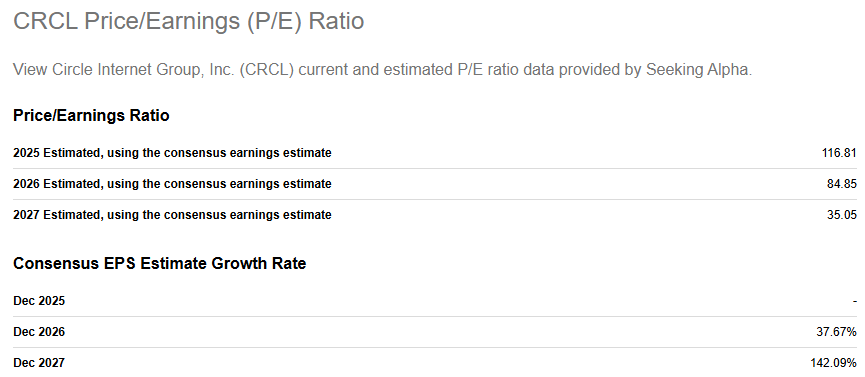
This shift suggests two things: 1) Profitability is expected to accelerate; 2) The current stock price may not fully reflect future earnings power.
So while Circle isn't yet highly profitable, strong growth potential gives its current valuation context — and possible upside for long-term investors.
After Circle’s IPO Surge and Pullback — Buy the Dip or Exit?
TradingKey - After a blockbuster IPO, Circle—the company behind the USDC stablecoin—saw its stock price skyrocket to 8x its offering price on the first day of trading. But fast forward two weeks, and sentiment has cooled off. The stock is now consolidating around $150, leaving investors asking the big question:
Is this dip a golden entry point—or is it time to cash out and de-risk?
What Makes Stablecoins More Than Just a Crypto Fad?
While some still see stablecoins as just another crypto offshoot, they’re gaining serious traction as a potential evolution of fiat money. With benefits like instant settlement, no middlemen, near-zero transaction fees, irreversible transactions, programmability, and full transparency, stablecoins are shaping up to be a major player in global finance—not just crypto.
So, why are people actually using them?
It comes down to three things every user cares about—safety, speed, and cost. Most people don’t actually care if it’s a “stablecoin” under the hood. They care if their money arrives safely, quickly, and without high fees. As Higlobe co-founder Farman-Farmaian put it: users only care about outcomes, not what token powers that outcome.
And this is exactly where stablecoins shine—especially for cross-border payments. Because they’re pegged 1:1 to the U.S. dollar, users don’t have to worry about FX volatility. USDC, in particular, stands out. It's backed by cash and short-term treasuries—making it one of the most transparent and liquid options in the space. Compare that with USDT (Tether), which has a murky reserve mix (including loans, crypto, and even precious metals) and a history of regulatory scrutiny.
In short, USDC addresses real-world pain points in cross-border finance: it’s fast, safe, and cheap.
The Market Is Big—and It’s Getting Bigger
We’re just scratching the surface. Even if stablecoins only capture a sliver of the global financial system, the upside is massive. According to a joint report from Standard Chartered and Zodia Markets, stablecoins could account for 10% of the U.S. money supply and global FX volume by 2035.
USDC currently owns about 28% of the stablecoin market. If Circle can maintain or grow that share, its revenue could one day rival that of Visa—yes, the $600 billion payments giant.
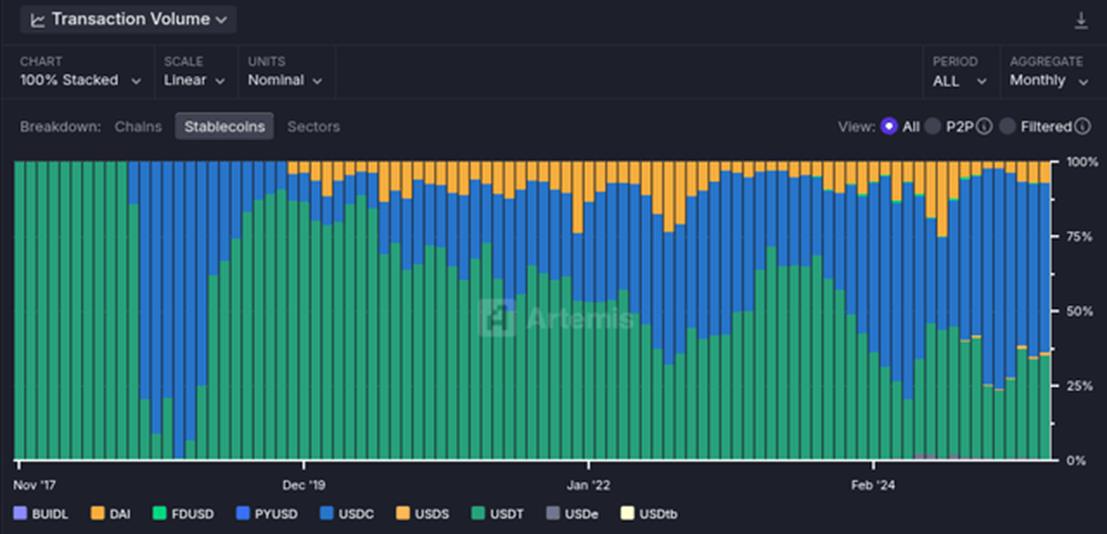
Right now, most of the demand is flowing from emerging markets.
In regions like Africa, Latin America, and Southeast Asia, access to stable financial infrastructure is limited. From individuals looking to hedge against local currency volatility, to small businesses struggling to make cross-border payments, stablecoins (especially USDC) offer an appealing alternative.
It started with crypto-native firms moving capital around blockchain ecosystems. But now, large multinationals are paying serious attention. Use cases are evolving rapidly, and one breakout scenario tends to lead to more. Demand is compounding.
But What's the Catch? It’s Not All Smooth Sailing
Yes, stablecoins are promising—and USDC is a top contender. But Circle’s business model has its weak spots.
First, let’s talk about revenue. Circle makes money by investing the dollars backing your USDC into U.S. Treasuries and other low-risk instruments. That interest goes to Circle—not to you. So effectively, Circle gets access to billions in “zero-interest” capital. Not a bad deal—unless interest rates start heading south.
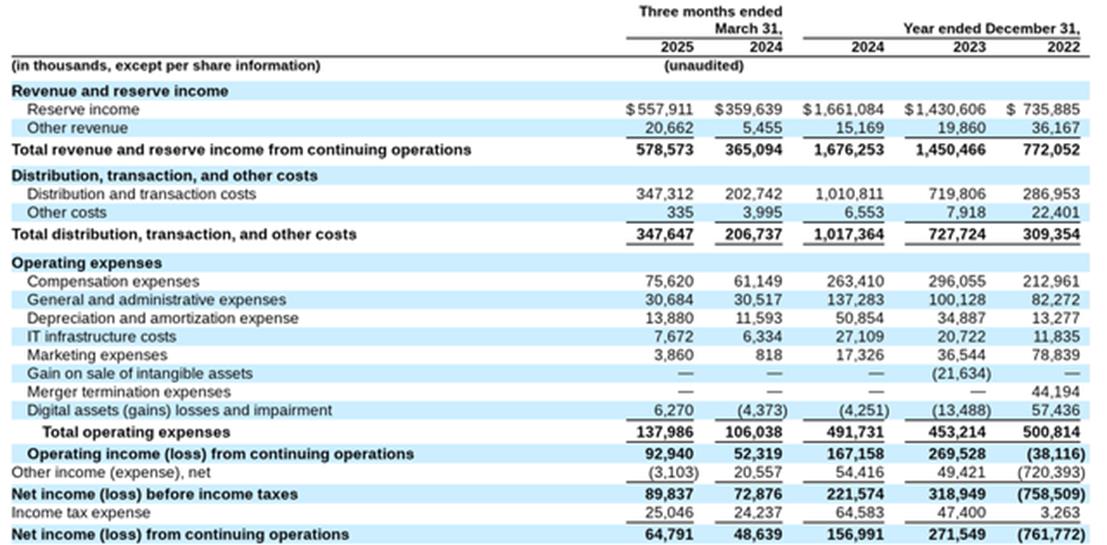
And that’s exactly what markets are anticipating. With the Fed widely expected to begin a rate-cutting cycle, Circle’s yield on those reserves could shrink fast.
Now add competition into the mix.
Some upstart stablecoins are shaking things up by offering yield directly to holders. That puts pressure on Circle’s “no-interest-to-users” model and could redirect institutional flows away from USDC over time.
There’s also a strategic pivot underway. Circle is branching out into non-USD stablecoins—including the newly launched EURC, pegged to the euro. A smart long-term move, but still early days in terms of uptake.
Then there’s the tricky part: its partnership with Coinbase.
Circle and Coinbase co-founded USDC, and under current agreements, Coinbase gets a big chunk—up to 60%—of the revenue generated from USDC, primarily for distribution and promotion. That eats into Circle’s margins in a big way.
Even more concerning? If Circle is ever unable to meet certain obligations or faces regulatory issues, Coinbase has the contractual right to become the sole issuer of USDC. That’s not just a revenue problem—it could undermine Circle’s entire role in the ecosystem.
To offset this, Circle is reportedly renegotiating its revenue-sharing structure and attempting to build its own distribution stack. Easier said than done—and whether the market will accept a new distribution pathway remains to be seen.
Conclusion
At a high level, Circle still looks positioned as a key player in the evolution of digital finance. With compliant infrastructure, institutional-grade reserves, and rising real-world utility, USDC could continue to expand across both emerging economies and enterprise use cases.
But the long-term opportunity has some near-term execution risks.
Revenue is heavily tied to interest rates and dependent on a profit-sharing model that may not be sustainable. Meanwhile, competition is heating up fast.
The IPO hype has settled—but that doesn’t mean the story’s over. This correction may be less about weakness and more about recalibration. For mid- to long-term investors, it’s an ideal window to reassess: does Circle really have the fundamentals, strategy, and moat to grow into a $600 billion narrative?
The company wants to become the “Visa of Web3.” The next chapter will show whether that’s vision—or vapor.



